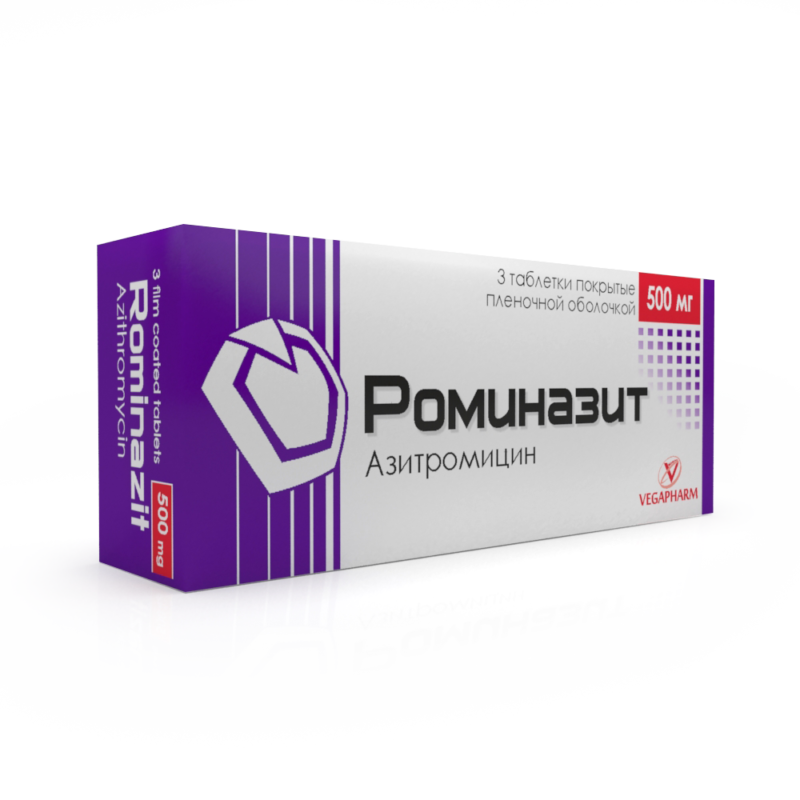
Rominazit
Azithromycin is an azalide, a sub-class of the macrolide antibiotics. By binding to the 50Sribosomal sub-unit, azithromycin avoids the translocation of peptide chains from one side of the ribosome to the other. As a consequence of this, RNA-dependent protein synthesis in sensitive organisms is prevented.
Composition
Each film coated tablet contains: azithromycin USP (as dihydrate) equivalent to azithromycin anhydrous – 500mg
Excipients q.s
Colour: titanium dioxide.
Indications for use
Rominazit is indicated for the following bacterial infections induced by micro-organisms susceptible to azithromycin:
- acute bacterial sinusitis (adequately diagnosed)
- acute bacterial otitis media (adequately diagnosed)
- haryngitis, tonsillitis
- acute exacerbation of chronic bronchitis (adequately diagnosed)
- mild to moderately severe community acquired pneumonia
- infections of the skin and soft tissues of mild to moderate severity e.g. folliculitis, cellulitis, erysipelas
- uncomplicated Chlamydia trachomatis urethritis and cervicitis
- consideration should be given to official guidance on the appropriate use of antibacterial agents.
Mode of application
Rominazit should be given as a single daily dose. Duration of the treatment for the different infection diseases is given below.
The tablets can be taken with or without food.
The tablets should be taken with ½ glass of water.
Children and adolescents with a body weight above 45 kg, adults and the elderly:
The total dose is 1500 mg, administered as 500 mg once daily for 3 days. Alternatively, the same total dose (1500 mg) can be administered in a period of 5 days, 500 mg on the first day and 250 mg on day 2 to 5.
In the case of uncomplicated Chlamydia trachomatis urethritis and cervicitis, the dosage is 1000 mg as a single oral dose.
Children and adolescents with a body weight below 45 kg: Rominazit tablets are not suitable for patients under 45 kg body weight. Other dosage forms are available for this group of patients.
Elderly patients: For elderly patients the same dose as for adults can be applied. Since elderly patients can be patients with ongoing proarrhythmic conditions a particular caution is recommended due to the risk of developing cardiac arrhythmia and torsades de pointes.
Patients with renal impairment: Dose adjustment is not required in patients with mild to moderate renal impairment (GFR 10-80 ml/min).
Patients with hepatic impairment: Dose adjustment is not required for patients with mild to moderate hepatic dysfunction.